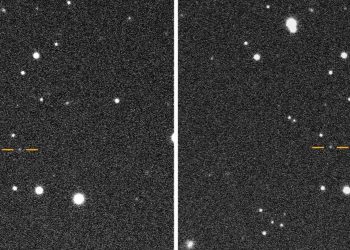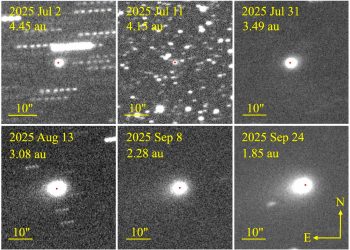In the vast frozen expanse of northern Greenlandgroundbreaking discovery offers new perspective on the Arctic’s distant past. Researchers have discovered evidence of a much warmer climate, one that challenges the frozen landscape we experience today. The caves of this remote region contain rare geological deposits which tell the story of a time when the Arctic was much more temperate and the Earth’s climate more unstable than we could have imagined. This discovery offers more than just historical information: it is a powerful warning for our climate future.
Discover ancient climatic secrets in Greenland’s remote caves
For centuries, scientists have searched clues about past climates in hopes of understanding how Earth might respond to the current climate crisis. While most of the world’s climate records come from marine sediments, a team led by geologists from the University of Innsbruck has discovered a new and unique source: Greenland’s High Arctic Caves. This research, published in Natural geoscienceshighlights the importance of these ancient time capsules, which preserve not only the history of Earth’s warming periods, but also the fragile relationship between temperature and atmospheric carbon dioxide (CO₂).
The research team, led by Gina MosleyGabriella Koltai and Jonathan Baker discovered calcite deposits in a cave known as Cove Cave, located in the far north of Greenland. These deposits, which can only form when the ground is free of permafrost and water flows freely, reveal that northern Greenland was once free of the permanent ice sheets that now cover much of the region. As Moseley explains, “these deposits are like tiny time capsules,” showing a radically different Arctic environment.

The end of the Miocene: a period of rapid climate change
The Upper Miocenea period that began around 11 million years ago, is a key part of the team’s study. This period is particularly relevant because the distribution of Earth’s land and oceans was similar to today and atmospheric CO₂ levels were comparable to future projections for this century. Research suggests that in the late Miocene, average temperatures in northern Greenland were around 14°C higher than today. The region was not only free of permafrost, but also much wetter, with periods of rain unlikely under current climate conditions.
Analysis of the cave’s calcite deposits reveals several distinct warm periods during the Late Miocene, occurring between 9.5 and 5.3 million years ago. These warm periods were followed by cooling phases during which small glaciers formed, suggesting that even modest changes in atmospheric conditions could trigger dramatic changes in climate. The Arctic environment. Moseley highlights the region’s rapid response to these changes, saying: “We can see that the climate responded strongly and quickly to changes in boundary conditions. »
How Greenland’s climate responded to CO₂ levels
One of the most striking conclusions of this study is the sensitivity of the Arctic climate to increase in atmospheric CO₂even at relatively moderate levels. Today we face a global increase in CO₂ that far exceeds levels seen in the late Miocene, but the study highlights a striking similarity: past and present climates show how the Arctic responds quickly to even small changes in carbon dioxide concentrations.
The fact that these records come from land rather than ocean is significant, as they provide a more complete picture of Arctic history and offer a new lens through which to observe future climate projections. Data suggests that if current CO₂ levels continue to rise, the Arctic could experience equally rapid changes, triggering the release of large amounts of greenhouse gases from thawing permafrost.
The Arctic: a dynamic and volatile climate system
What makes the Arctic particularly attractive is its dynamism. Unlike other regions of the planet, the Arctic is very sensitive to changes in temperature and atmospheric composition. Moseley notes that the Arctic has “never been a stable system,” emphasizing how quickly environmental conditions can change. Understanding the unstable nature of the Arctic climate is essential, as it is key to future climate models.
The results of the study clearly show that the Arctic climate is very sensitive to even moderate climatic variations. increase in CO₂. Permafrost, which covers much of the region’s land, is a powerful reservoir of carbon and methane which, when released, can further worsen global warming. Thus, the current increase in greenhouse gas emissions could potentially trigger feedback loops that would accelerate the thawing of the Arctic.
This study is not only a record of past climates, but also a vital warning for our future. This is a reminder of the fragility of the Arctic environment and the urgent need for action to mitigate the impacts of climate change.









